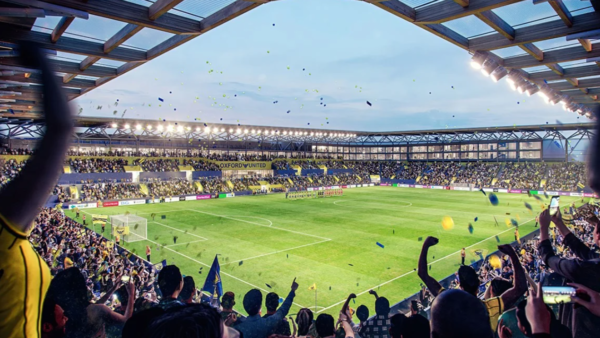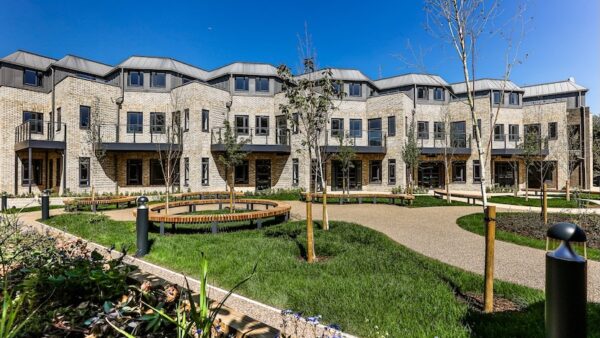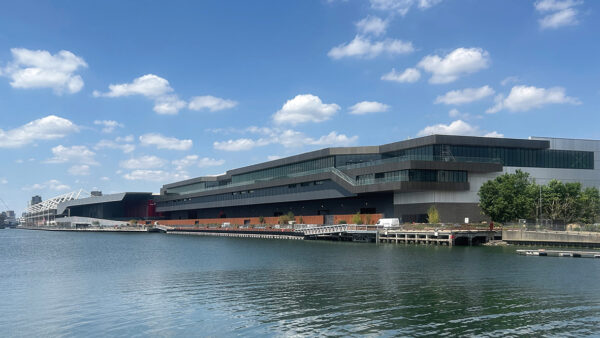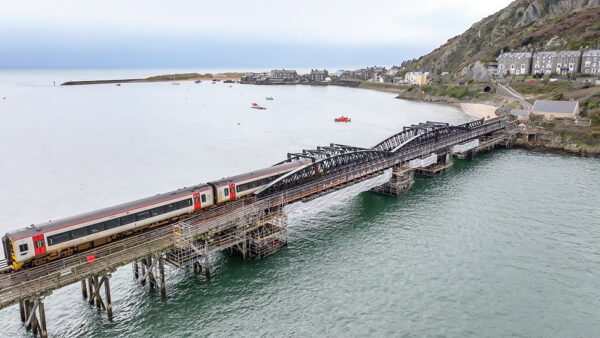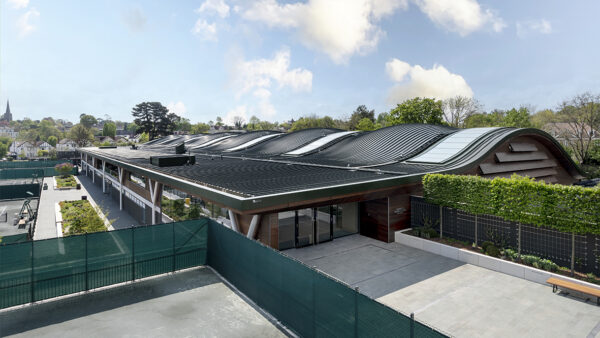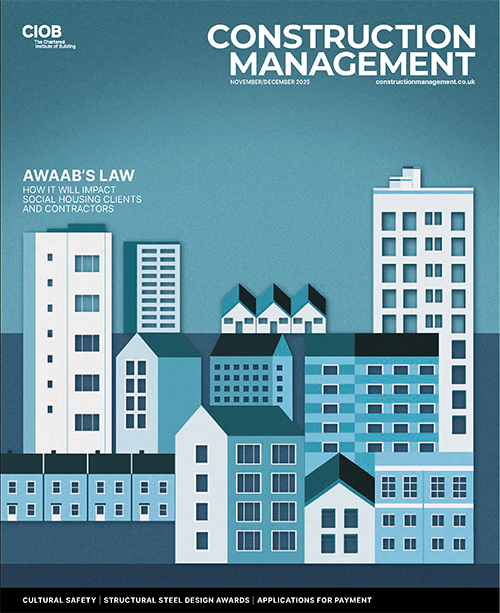What’s driving the growth in demountable venues for events like Abba Voyage? Mott MacDonald’s Rob Sayce looks at the financial, design, and construction drivers.
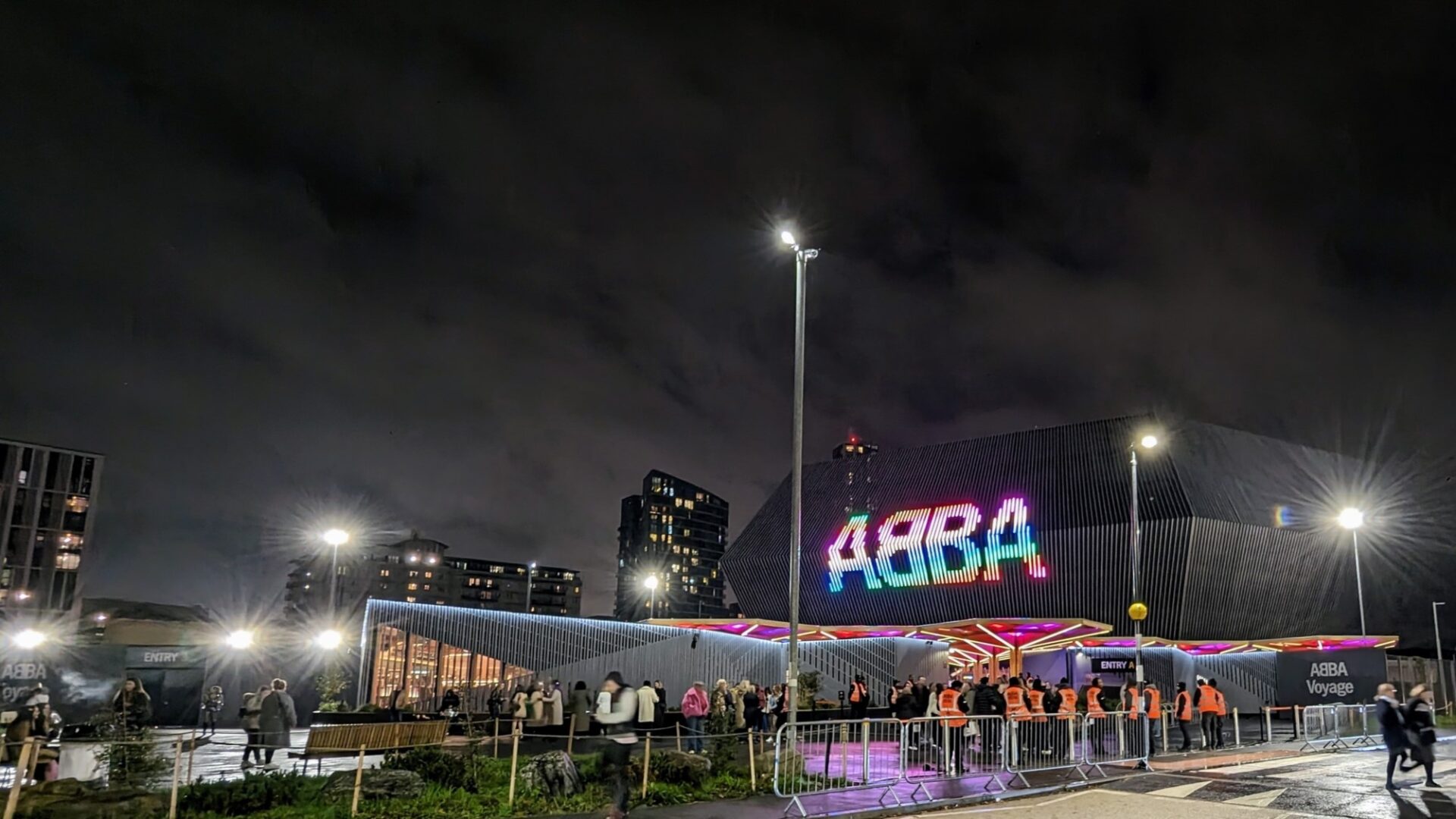
The Abba Voyage tribute to Swedish pop group Abba has been a must-have ticket for tourists visiting London for a couple of years, and the 3,000 capacity Abba Arena that hosts it has become an icon for the venue sector. It is the world’s largest demountable venue and is not set to permanently remain in East London – it will be transported to another site in the future.
The Abba Arena is part of a new breed of demountable structures that moves away from the basic functionality of overflow classrooms, temporary housing or hospital facility that first comes to mind when talking about temporary venues. The cost, sustainability and location opportunities for demountable – sometimes called temporary or modular – venues have driven an evolution over the last decade, creating a wow factor devoid of past solutions.
Starting with the 2012 London Olympics, there has been a trend towards using demountable structures as a means of delivering entertainment, cultural and sporting venues. The difference between these structures and their more functional counterparts is that their look and feel is more akin to permanent structures.
Sustainability through reuse
While the use of demountable structures is not new, the difference goes beyond just looks, with a focus on sustainability through reuse – either as a whole structure or as parts – central to their design.
The key factors that make demountable structures attractive to investors and promoters alike is the speed at which the venues can be built and operated, reducing return-on-investment periods, allowing products to come to market quicker. They enable the trial of new products for proof of concept, while also entering new geographies and markets where there isn’t any venue infrastructure, but there is demand for the product.
The phrase “meanwhile use” is applied to projects that monetise land with a demountable venue product that has no impact on the long-term development potential of the land. Developers will often leave land dormant until market conditions are optimised for their return, which can be a frustration for local authorities. But meanwhile use provides benefits for landowners and local authorities.
Designing for temporary use
There are three key criteria that need to be considered for the design of demountable structures which are unique and call for different considerations than for permanent structures.
First, there are the short timescales – demountable structures are often employed in response to an immediate need and, therefore, solutions need to be deployable often at very short notice.
The second is construction and disassembly – components need to be lightweight, simple to transport, able to be rapidly assembled, and readily dismantled and reused.
Finally, there is the need for flexibility, as a temporary structure may need to be reconfigured for use in new locations, subject to different loading conditions, geometry or use.
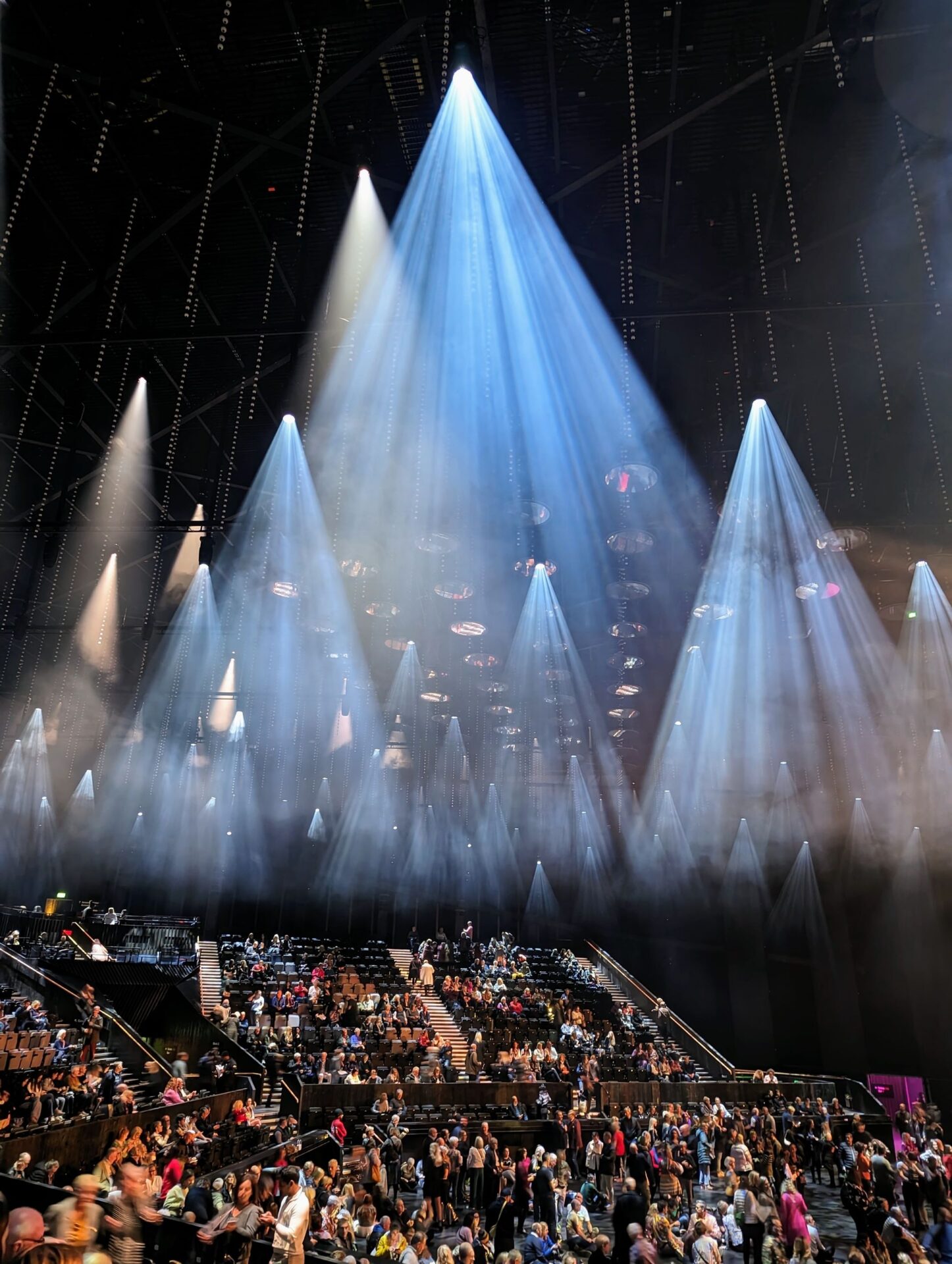
Thinking about the materials and the connections is key to addressing these criteria. Typically, steel and timber are most suitable for use in demountable structures as they are the easiest to dismantle and reuse at end of life. Reinforced concrete should typically be avoided where possible as it is very hard to reuse and heavy to transport. Maximising the use of bolted connections also allows rapid assembly from small, easily transportable components, and future demountability.
The flexibility issue can be addressed through increasing simplicity and predictability by reducing or eliminating elements, such as long spans, complex load paths and large cantilevers. Using additional columns or bracing will keep costs lower and accelerate the design process.
Speed of construction
Maximising design repetition is also critical to increasing the speed of construction and allowing some flexibility in adapting for different uses.
Temporary structures will often be supported on shallow foundations or simple load spreading systems. Ground conditions should be considered, including presence of below-ground services and structures, to ensure potential soft spots are considered and both short- and long-term effects are accounted for.
When supporting temporary structures on existing hard standing, be aware that the thickness of the buildup, such as concrete or asphalt, will have a significant impact on the ability to support point loads.
Care is also needed to accurately establish potential uplift and sliding forces, which are typically likely to come from wind action. Appropriate design measures include additional kentledge or ground anchors, which should be selected based on the individual project and site requirements. Check that the design documents clearly state the design wind speed so that the maximum during which the structure can safely operate is known to the event organisers.
While the wind speed design guidance may lead to the venue being empty due to event cancellation, this must also be considered in the design. This is particularly relevant to grandstands where the spectator occupancy is hard to predict and wind is often a critical design scenario.
Putting reuse into action
Designing for reuse is one matter, but making it happen to realise the full sustainability of a design is another.
Mott MacDonald supported contractor ES Global on the delivery of the permanent velodrome facility for the 18th Asian Games in Jakarta, Indonesia, in 2018. To meet the tight construction schedule, there was a focus on reusing existing steelwork stock and this led to the roof structure from the London 2012 Olympic Shooting and Water Polo venues being incorporated.
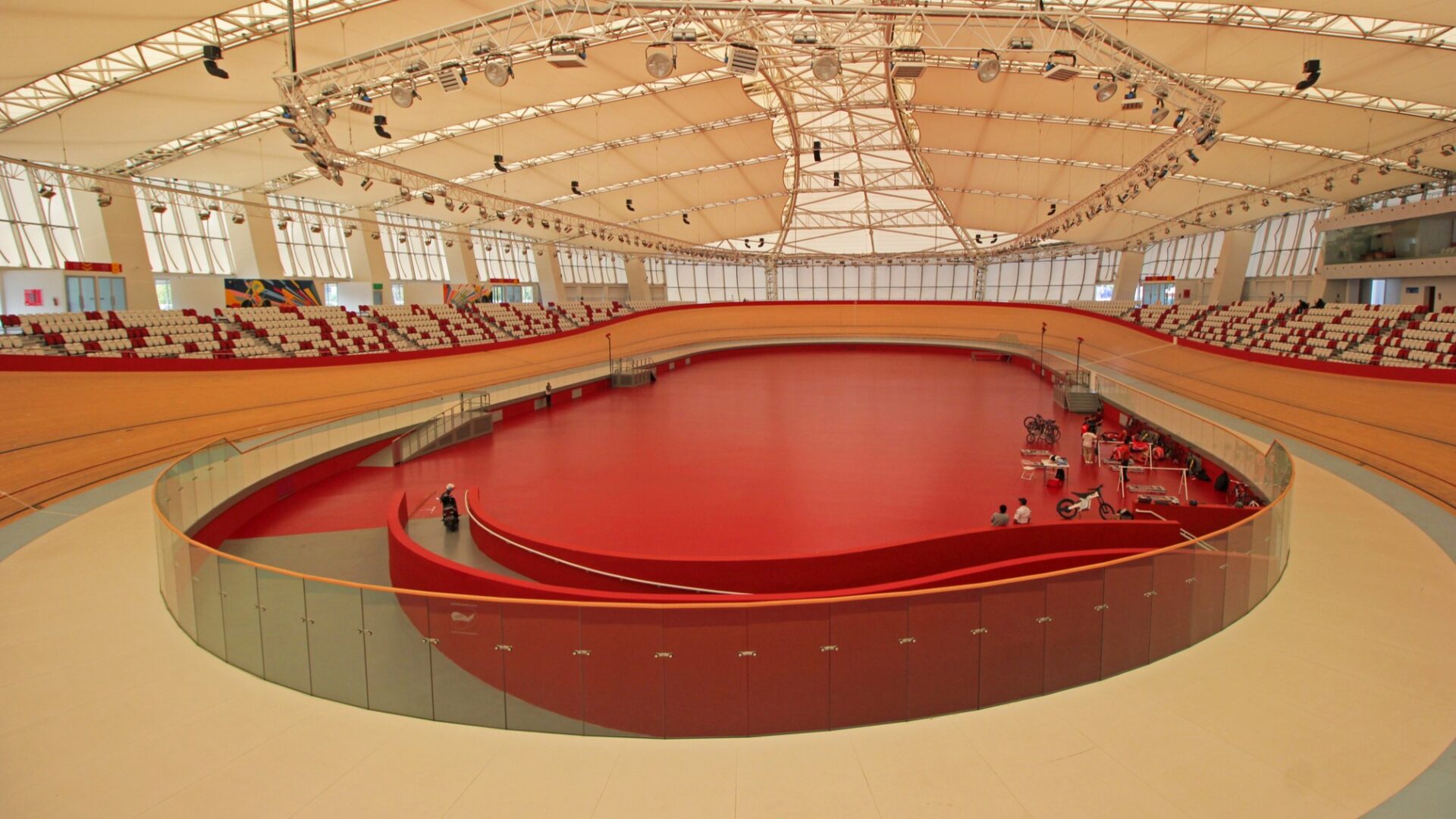
This reuse called on our teams to support with steelwork connection designs, temporary works design and erection analysis, which are not typically part of the building design scope. Detailed construction analysis models were also used to fully integrate the steelwork fabrication model, enabling a significant reduction in temporary works compared to other velodrome construction projects.
Future development
While the design of each demountable structure will vary in the same way that its reuse will, what is clear is that temporary or demountable venues are here to stay, even if the venues themselves may not stay in the same format or location for long.
The main driver for this is likely to remain the reluctance to host major sporting events due to the cost and legacy, so cities and the rights holders need to respond differently. One way may be a travelling circus of modular buildings that can serve the functions. However, the complication will be with the investor, owner and operator of these venues that will likely take away further perceived economic benefit for the host cities.
Whatever the solution for sports, music and other events, clear understanding of the ambition and constraints will remain key to designing successful and iconic demountable venues.
Rob Sayce is project director for buildings in the South, Midlands and Wales at Mott MacDonald.



